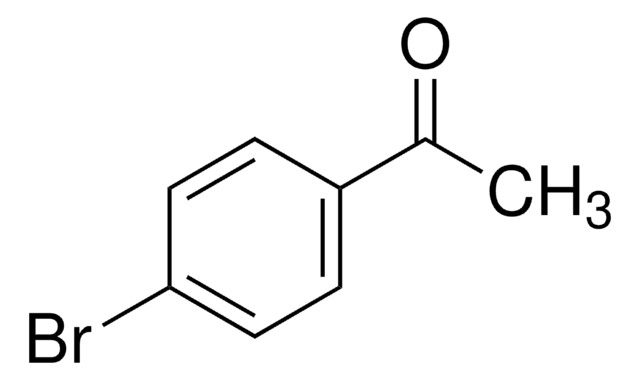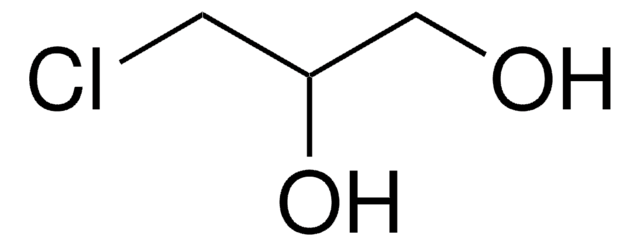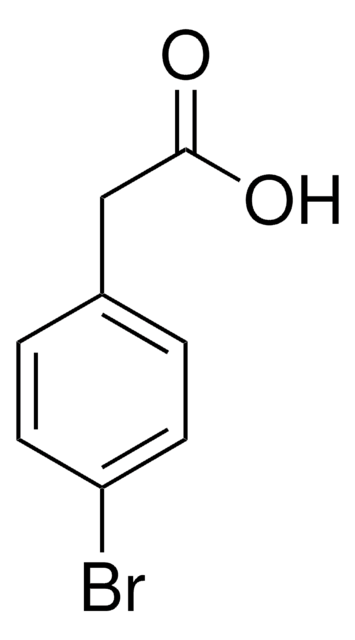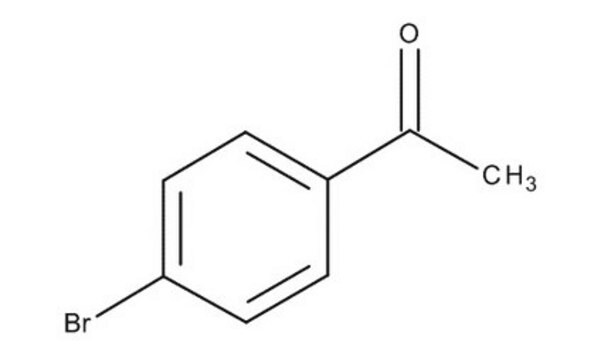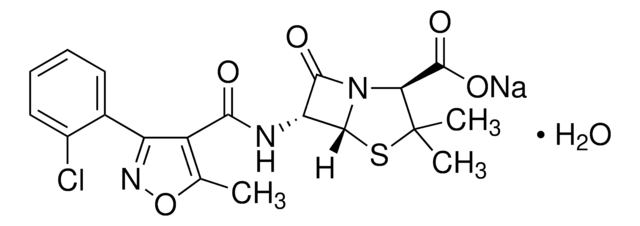78181
Phenylboronic acid
purum, ≥97.0% (HPLC)
Synonym(s):
Benzeneboronic acid, Dihydroxyphenylborane, NSC 66487, Phenyl-boric acid, Phenylboric acid, Phenyldihydroxyborane
Sign Into View Organizational & Contract Pricing
All Photos(4)
About This Item
Linear Formula:
C6H5B(OH)2
CAS Number:
Molecular Weight:
121.93
Beilstein:
970972
EC Number:
MDL number:
UNSPSC Code:
12352103
PubChem Substance ID:
NACRES:
NA.22
Recommended Products
grade
purum
Quality Level
Assay
≥97.0% (HPLC)
form
crystals
mp
216-219 °C (lit.)
218-222 °C
SMILES string
OB(O)c1ccccc1
InChI
1S/C6H7BO2/c8-7(9)6-4-2-1-3-5-6/h1-5,8-9H
InChI key
HXITXNWTGFUOAU-UHFFFAOYSA-N
Looking for similar products? Visit Product Comparison Guide
General description
Phenylboronic acid is a highly stable receptor ligand used in cross-coupling reactions and drug delivery.
Phenylboronic acid (PBA) is an organoboronic acid. It behaves as a molecular receptor that can attach to compounds containing cis-diol group. Microwave-assisted Suzuki coupling of aryl chlorides with phenylboronic acid in the presence of Pd/C (catalyst) and water (solvent) has been described. Palladium-catalyzed cross-coupling reaction of phenylboronicacid with haloarenes to afford biaryls has been reported.
Phenylboronic acid (PBA) is an organoboronic acid. It behaves as a molecular receptor that can attach to compounds containing cis-diol group. Microwave-assisted Suzuki coupling of aryl chlorides with phenylboronic acid in the presence of Pd/C (catalyst) and water (solvent) has been described. Palladium-catalyzed cross-coupling reaction of phenylboronicacid with haloarenes to afford biaryls has been reported.
Application
Phenylboronic acid may be employed in the following reactions:
Phenylboronic acid may be employed as reagent in the preparation of:
- Rhodium-catalyzed intramolecular amination.
- Pd-catalyzed direct arylation.
- Mizoroki-Heck and Suzuki-Miyaura coupling reactions catalyzed by palladium nanoparticles.
- Palladium-catalyzed stereoselective Heck-type reaction.
- Highly effective Palladium-catalyzed arylation Suzuki-Miyaura cross-coupling in water.
Phenylboronic acid may be employed as reagent in the preparation of:
- Ni(II) pincer complex and Pd(II) pyridoxal hydrazone metallacycles as catalysts for the Suzuki-Miyaura cross-coupling reactions.
- N-type polymers for all-polymer solar cells.
- Novel series of potent and selective mTOR kinase inhibitors.
- Inhibitors of lactate dehydrogenase against cancer cell proliferation.
Other Notes
Contains varying amounts of phenylboronic anhydride
Signal Word
Warning
Hazard Statements
Precautionary Statements
Hazard Classifications
Acute Tox. 4 Oral
Storage Class Code
11 - Combustible Solids
WGK
WGK 3
Flash Point(F)
Not applicable
Flash Point(C)
Not applicable
Personal Protective Equipment
dust mask type N95 (US), Eyeshields, Gloves
Choose from one of the most recent versions:
Already Own This Product?
Find documentation for the products that you have recently purchased in the Document Library.
Customers Also Viewed
Riina K Arvela et al.
Organic letters, 7(11), 2101-2104 (2005-05-20)
[reaction: see text]. We present here a methodology for the Suzuki coupling of aryl chlorides with phenylboronic acid using Pd/C as a catalyst, water as a solvent, and microwave heating. We show that simultaneous cooling in conjunction with microwave heating
Peng-Cheng Chen et al.
Langmuir : the ACS journal of surfaces and colloids, 27(20), 12597-12605 (2011-09-09)
Phenylboronic acid (PBA)-functionalized materials have attracted considerable attention because of their potential applications in many fields. In this paper, we report a PBA-segregated honeycomb-patterned porous film (HPPF) for glucose sensing. Polystyrene-block-poly(acrylic acid-co-acrylamidophenylboronic acid) with different contents of PBA pendants was
Synthesis of polyfunctional glycerol esters: lipase-catalyzed esterification of glycerol with diesters.
Villeneuve P, et al.
Journal of the American Oil Chemists' Society, 75(11), 1545-1549 (1998)
Discovery and SAR exploration of a novel series of imidazo[4,5-b]pyrazin-2-ones as potent and selective mTOR kinase inhibitors
Mortensen, D. S.; et al.
Bioorganic & Medicinal Chemistry, 21, 6793-6799 (2011)
María Moreno-Guzmán et al.
Biosensors & bioelectronics, 35(1), 82-86 (2012-03-14)
This work reports for the first time an electrochemical immunosensor for the determination of adrenocorticotropin hormone (ACTH). The immunoelectrode design involves the use of amino phenylboronic acid for the oriented immobilization of anti-ACTH antibodies onto screen-printed carbon modified electrode surfaces.
Our team of scientists has experience in all areas of research including Life Science, Material Science, Chemical Synthesis, Chromatography, Analytical and many others.
Contact Technical Service


